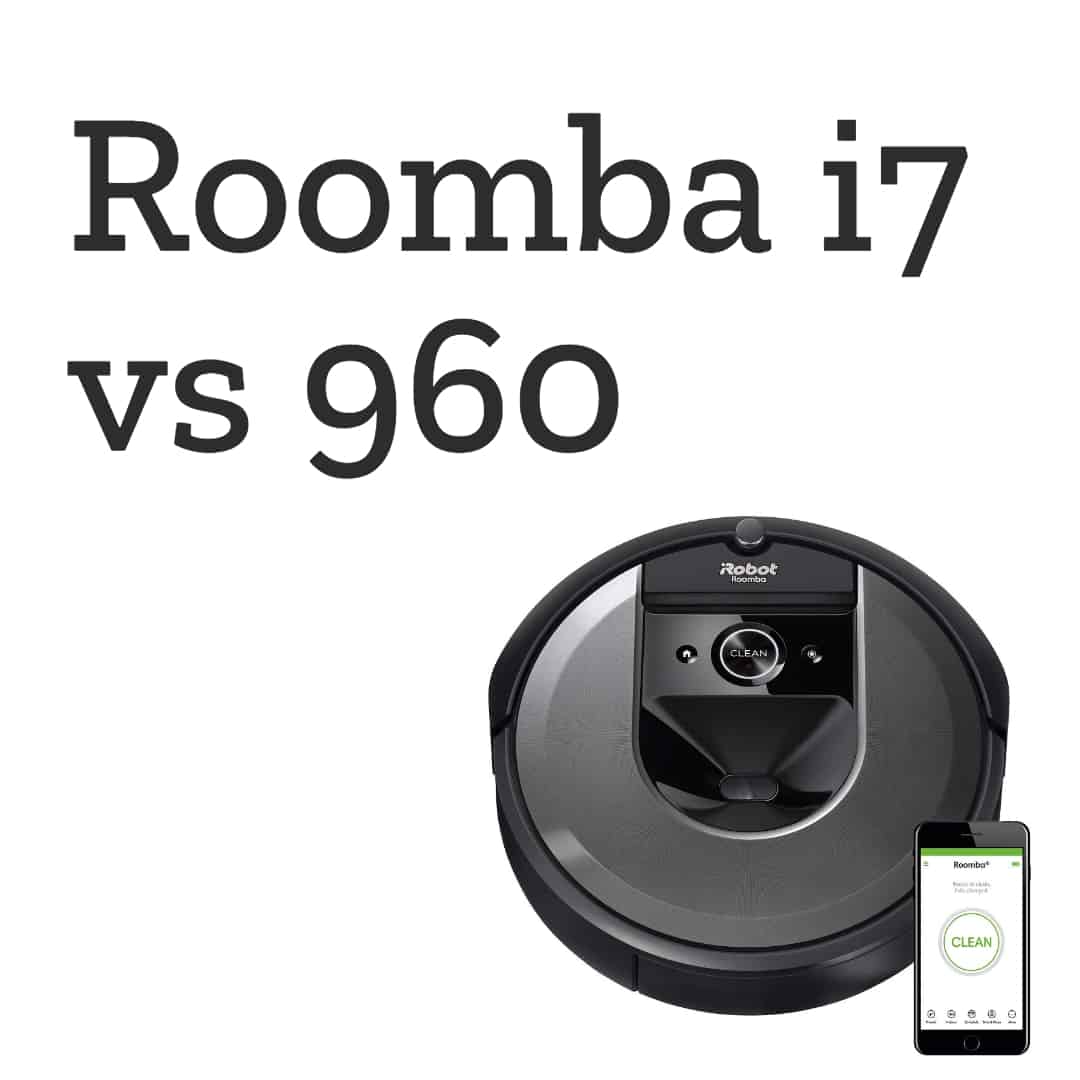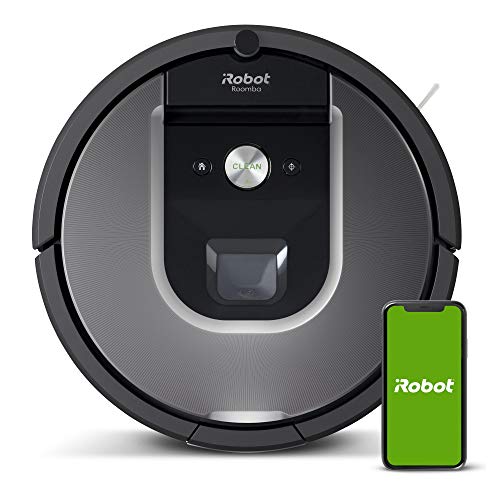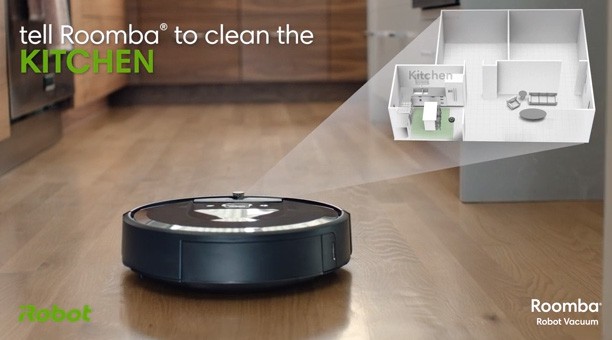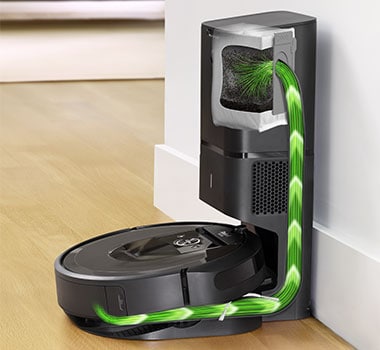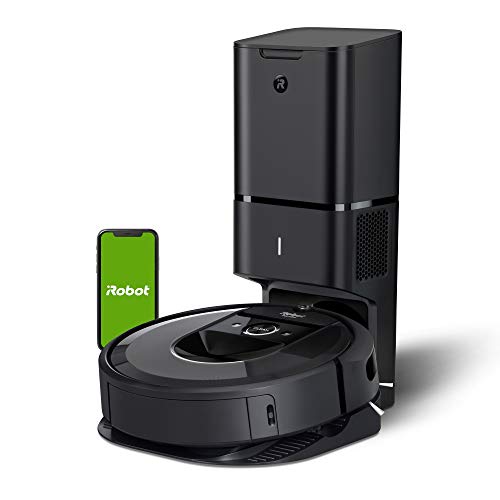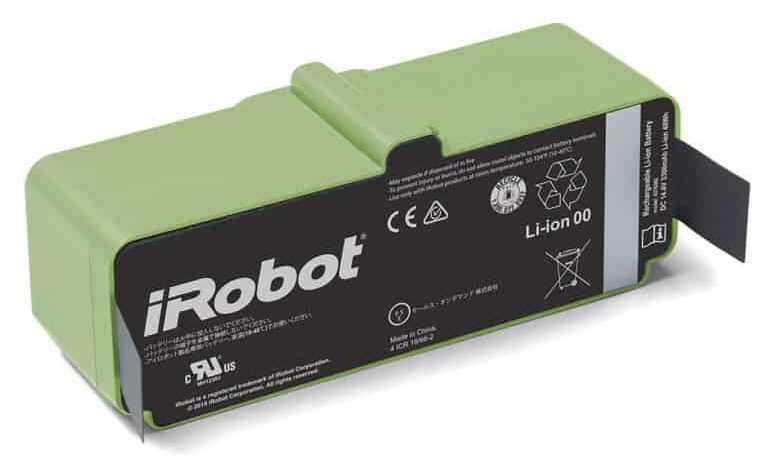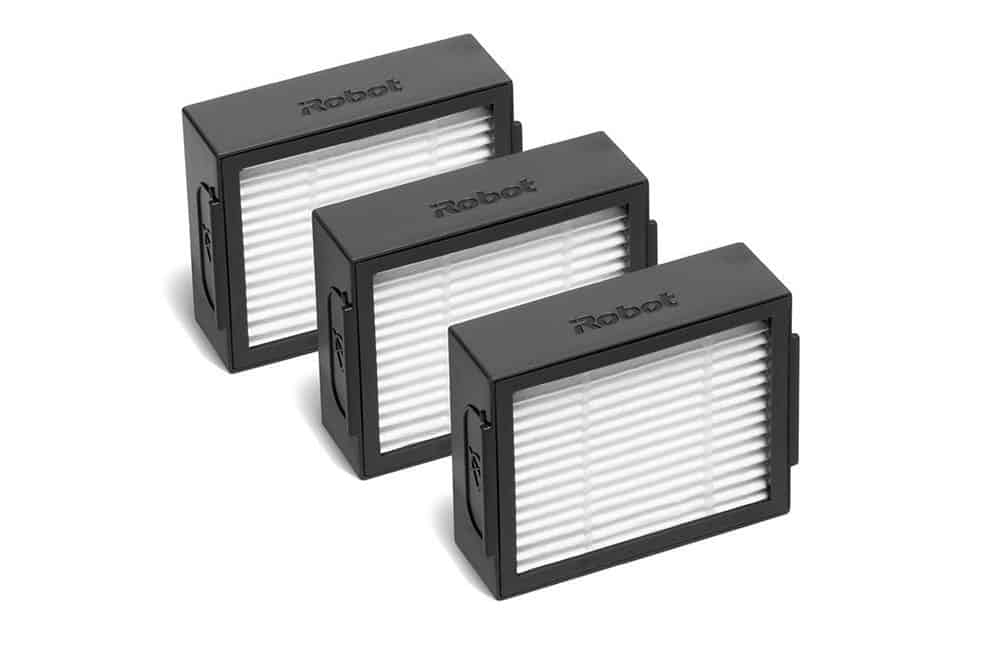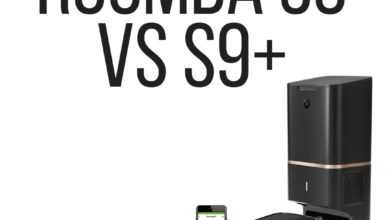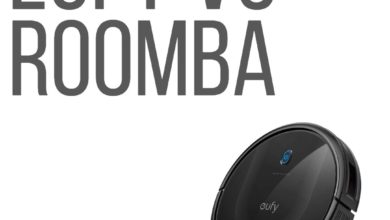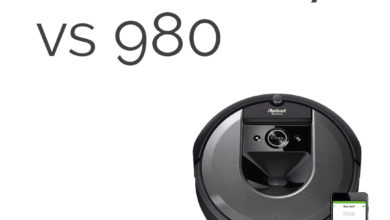Roomba i7 vs 960: Key Differences & Similarities
iRobots Roomba product line is synonymous with premium quality and advanced technology. Most of the hardware and software that goes into robot vacuums is boundary-pushing and can be confusing at a glance. This comparison of the Roomba i7 vs Roomba 960 will delve into the most important features including navigation, cleaning, and smart home technology, and explain their relevance and question whether they will really matter to you. By the end, you will understand the differences between each of these robot vacuums.
Related: Roomba 960 and 980 Comparison
Contents
Comparison Chart: Roomba i7 vs 960
| Model | ROOMBA i7+ | ROOMBA 960 |
|---|---|---|
| Design | 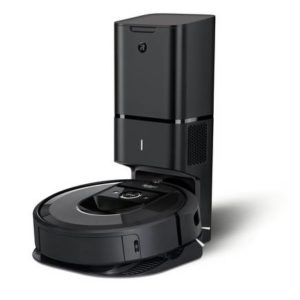 | 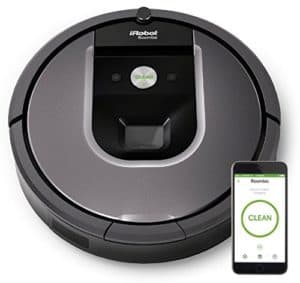 |
| iAdapt Version | iADAPT 3.0 | iADAPT 2.0 |
| Mapping Technology | IMPRINT | SMART |
| Cleaning Motor | GEN 3 (10x Stronger) | AEROFORCE (5x Stronger) |
| Recharge/ Resume Cleaning | ✔ | ✔ |
| Automatic Dirt Disposal | ✔ | |
| Bottom Line | Recommended Pick for the best features and balanced price | Recommended Pick for the mid price range |
| Availability | Check Price | Check Price |
1.Design & Measurements
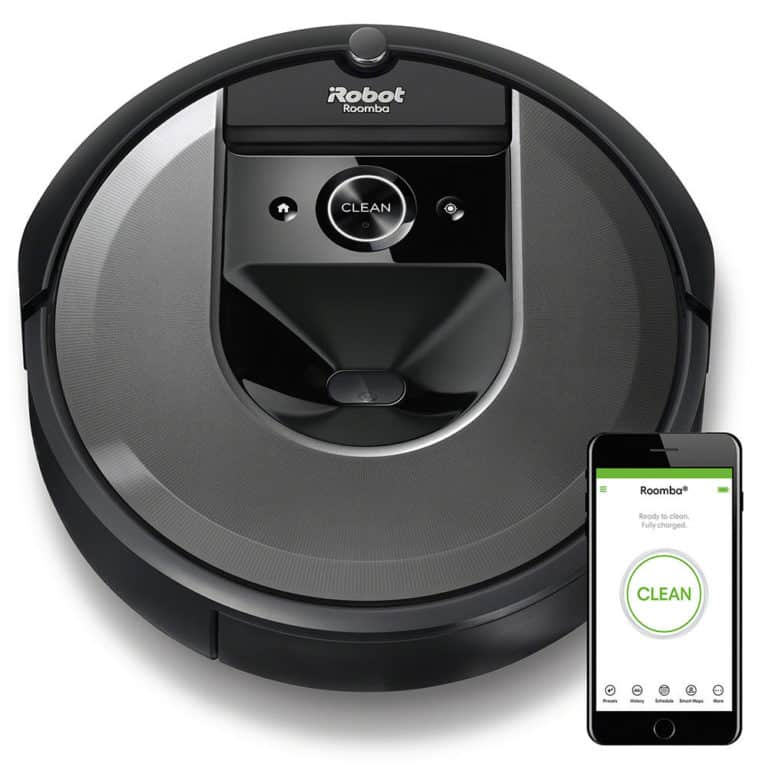
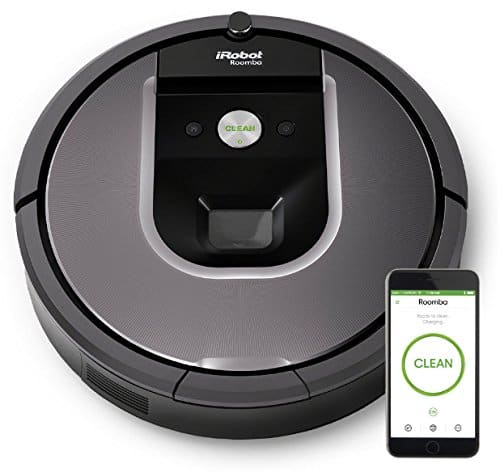
The design of the Roomba i7 and 960 are certainly similar although there are a few minor differences. They have the traditional rounded robot vacuum look. Both are dominated by a dark grey and black color scheme, although the Roomba i7 is a little darker. Placing of the buttons and the compartment which houses the camera for smart mapping are the same shape, and the iRobot logo is positioned at the front end of the robot vacuum. The dimensions and weight of each of these robot vacuums are also very similar:
- The Roomba i7 is 3.7 inches high, 13.4 inches wide and weighs 7.5 lbs.
- The Roomba 960 is 3.6 inches high, 13.8 inches wide and weighs 8.7 lbs.
Each has side brushes and a main brush on the bottom side of the Roomba.
One of the biggest upgrades up to the Roomba i7 was the introduction of iAdapt 3.0 and Imprint Smart Mapping technology. This is the most advanced available from iRobot as it not only maps a user home but also identifies individual rooms. The key application of this is the individual cleanroom function which allows the user to select an individual room for cleaning. This is some of the most advanced navigation technology you can find in a robot vacuum.
This is especially useful if there is a spill or mess made in just one room. That way the Roomba can come straight to where it is needed, rather than clean the whole room. You can label each room whatever you like; living room, kitchen, bathroom and so on. Imprint Mapping and individual room cleaning also work with voice assistants such as Alexa, with the example command being “Alexa, clean the kitchen”. They also work with Google Assistant and Google Home for anyone who has their smart home setup.
iAdapt 2.0 is the navigation technology used by the Roomba 960 and doesn’t fall too short of iAdapt 3.0 on the whole. The technology works in a similar way by using Smart Mapping thanks to the camera found in the front of the hood of the 960 to build up a map of your home. The Roomba 960 will map rooms and remember where objects are to accordingly craft the perfect and most efficient cleaning route. Clean Map Reports are then accessible in the iRobot Home app where you can view your homes map and cleaning statistics. The mobile app has other uses such as scheduling cleaning.
Included with both the Roomba i7 and 960 are the older yet still applicable navigation technologies such as Dirt Detect and Cliff Detect. These improve cleaning performance and prevent the Roomba from falling down the stairs which can break it. Both models can also autonomously Self-Recharge and Self-Resume cleaning thanks to their smart mapping technology. When it comes to navigation technology, it is clear that the Roomba i7 is better.
Also Read: Roomba i7 vs S9
3. Cleaning Power
The power of the cleaning motor of the Roomba i7 is twice that of the one in the 960. First released in the Roomba 980, the Gen 3 Motor in the i7 is ten times more powerful than the typical 3-Stage Cleaning system in the 600 series Roombas. Roombas 960 model has the Aeroforce 3-Stage Cleaning Motor, which is five times more powerful than the 600 series.
Such a difference between these two motors means the suction power is ultimately stronger in the Roomba i7. In turn, this means the i7 will perform better than the 960 when cleaning carpets Such a difference will probably not make much a difference if your home is predominantly or entirely hard floor. The way the Roombas clean is similar, using side brushes that flick dirt under the path of the main brush.
4. Upgrade to Self-Disposal
Released alongside the Roomba i7+, the i7 is the same robot vacuum without the Clean Base Station. If you go for the i7 you can easily purchase this after which will provide you will Self-Disposal technology. Unfortunately, this technology came out long after the Romba 960 and is not currently available with it and is unlikely to ever be.
Self-Disposal technology is a boundary-pushing innovation in the robot vacuum market and a real luxury. There are only a handful of robot vacuums that have this technology. On top of the Roomba i7, it will cost an extra couple hundred dollars. Once set up, your i7 will be able to self dispose of up to 30 cleans which makes ease of use of the device incredibly seamless. You can read more about this in our comparison of the Roomba i7 vs i7+.
5.Dust bin Size
Roomba’s i7 model has a dust bin which is 40% bigger than the Roomba 960. This dust bin is a size of 0.7L compared to the 0.5 of the 960. If you opt for the Clean Base, this makes the gap between the two exponentially bigger. Depending on the size of your cleaning area, you will likely have to empty the Roomba 960 more frequently than you would the Roomba i7, maybe every clean versus just 2.
6.Battery Life & Specs
The quality, size, and specs of the Roomba i7 batteries are more solid than the Roomba 960. A 2600mAh Lithium-ion battery is used with the 960, whilst the i7 uses a 3300mAh lithium-ion battery. Despite being different sizes, both batteries have the same quoted charge time of around 3 hours. However, it is not the number on the battery that counts, but the outcome of its performance.
When it comes to battery life, the i7 wins considerably as it lasts for an extra 45 minutes. Its run time is 2 hours compared to the Roomba 960 which just has 75 minutes. Whilst on paper this is a big difference, there are a few reasons why this may not be so significant.
First off, if your living area is small and takes less than 75 minutes to clean, these specs are irrelevant as both will complete the job before they run out of batter. Secondly, each of these models can Self-Recharge and Self-Resume cleaning until the job is done. If you schedule the Roomba i7 or 960 to clean in the day, then it can take its time and get more juice by charging. If you’re out all day you won’t even notice this difference.
The only time this may matter is if your Roomba cleans when you are at home and it takes longer than 75 minutes but less than two hours to complete the job.
7. Similarities
Whilst there are some clear differences that are present when looking at the upgrade from the Roomba 960 to the i7, there are many similarities in some of the technologies that make iRobot a leading brand of robot vacuum.
iRobot Home App
Both the Roomba i7 and 960 are WiFi connectable devices (2.4 GHz) that can form part of a smart home setup. At the center of enabling this possibility is the exceptional iRobot Home app, which is acts as a new control point enabling a whole range of new features. Admittedly, there are a few features that the Roomba i7 can access that the 960 can’t on the app, and these are:
- Identify individual rooms (Imprint Mapping)
- Individual room cleaning
- Store different floorplans for upstairs and downstairs
Apart from these few features associated with Imprint Smart Mapping, the Roomba i7 and 960 can access many of the same features on the iRobot Home app:
- Clean Map reports
- Statistics on cleaning - coverage, clean time and charge time
- Start and pause cleaning
- Schedule for different days of the week
- Customize cleaning preferences
- Monitor the live activity of your Roomba
- Receive live notifications
- Voice control with Alexa
- Automatic software updates
HEPA Filters
Both the Roomba i7 and 960 use HEPA filters which capture up to 99% of the finest dust, debris, and pollen down to 3 microns in size. This can help boots battery life and remove your home of allergens that may affect you negatively.
Accessories
Both the Roomba i7 and 960 come with a virtual wall that can block the path of the Roomba. This is useful to prevent the cleaning of rooms which should be left untouched.
8. Overview of Main Differences
Here is a compounded lift of the main advantages that the Roomba i7 has over the 960:
- The Roomba i7 has more advanced navigation technology iAdapt 3.0 and Imprint Mapping, the most advanced from iRobot.
- The Roomba i7 has a more powerful cleaning motor; the Gen 3 Motor, twice as strong as the 960’s Aerofrce 3-Stage Cleaning Motor.
- The Roomba i7 will clean carpets better than the Roomba 960 with its more powerful carpet mode.
- The Roomba i7 can be upgraded to have Self Disposal by purchasing a Clean Base station.
- The Roomba i7 has a larger dust bin of 0.7L to the 0.5L dust bin of the 960.
- The Roomba i7 has a longer battery life of 120 minutes, 45 minutes longer than the 960s run time.
9. Overview of Main Similarities
This list compounds some of the similarities between these two robot vacuums:
- Both the Roomba i7 and 960 have Smart Mapping technology.
- Both the Roomba i7 and 960 have HEPA Filter
- Both the Roomba i7 and 960 can Self-Recharge and Resume cleaning.
- Both the Roomba i7 and 960 are WiFi connectable.
- Both the Roomba i7 and 960 work with the iRobot Home app.
- Both the Roomba i7 and 960 are controllable with voice assistants.
Final Word
Although the Roomba i7 has some clear advantages making it better, the Roomba 960 is still an incredibly high spec and advanced piece of technology that performs to a high standard. The reality is that many of the Roomba i7s features are luxury over the necessity and if you have a small living area with hard floors you will do just as well with the Roomba 960 as you would with the i7.
The most important factors are the Smart Mapping technology and access to the iRobot Home app, which both of these robot vacuums have. Whilst iAdapt 3.0 and Imprint Mapping is better than the navigation technology found in the Roomba 960, it is not game-changing as the iAdapat 2.0 is so advanced. One question that must be asked is your want to have Self-Disposal technology, as it is unlikely the Roomba 960 will be compatible with it in its current form.
